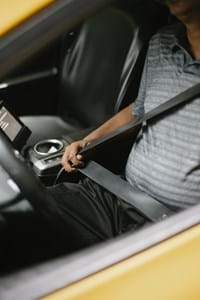
Road Safety Resources
Latest Research & Stats | ANCAP | Australasian College of Road Safety

Latest research and stats | Key Findings
Austroads
https://austroads.com.au is a great resource for those interested in Road Safety. There are a huge number of free resources available. Simply set up a free account and set aside time to review the site. The Austroads Guide to Road Safety was published in July 2021.
The Austroads Guide to Road Safety has been developed to provide an overview of road safety and road safety practices in Australia and New Zealand. It consists of seven Parts. Part 1 is an introduction to the Guide and The Safe System. It provides an overview of the structure of the Guide, its remaining seven parts and the interlinking and overlap between parts. It also describes Safe System, the guiding principles for road safety programs in Australia and New Zealand. The final section provides an overview of road agencies’ responsibilities for road safety, and how performance in meeting these responsibilities is managed and measured.
Extract from Austroads Guide to Road Safety Part-4 Safe People
Youth are over-represented in road crashes in Australia. During 1996, young people (aged 17-25 years) were involved in 41% of fatal crashes and 37% of hospitalisation crashes in Australia. In 1997 youth were involved in a total of 8513 fatal and hospitalisation crashes (Austroads 2000).
Males comprised 77% of all youth fatalities. The average proportion of male youths (of all youth) hospitalized annually was 65% between 1993-1997. This proportion is less than the male proportion of youth fatalities. The number of youths who are hospitalised is greatest for youths aged 18-21 years. Improvements in driver education, training and licensing have been identified as countermeasure to youth involvement in crashes. Although these countermeasures target a broader group of road users, they are used disproportionately by youth (Austroads 2000).
Resilience training for young drivers reduces long-term crash risk
A study that tracked almost 21,000 young drivers for more than a decade has revealed that those who took part in a resilience program in Year 11 were much less likely to have a car crash during their early years behind the wheel.
Published in Pediatrics, the 13-year (2003-2016) DRIVE study followed drivers aged 17-24 who received their licence in NSW between 2003-2004.
Led by researchers at QUT, George Institute for Global Health, and UNSW, the study aimed to determine if participation in the ‘Reduce Risk – Increase Student Knowledge’ (RRISK) resilience program run by NSW Health had a long-term effect on reducing motor vehicle crash risk and severity.
Lead author Professor Teresa Senserrick from the Centre for Accident Research & Road Safety – Queensland (CARRS-Q) and the QUT Faculty of Health said the study used baseline survey data and ongoing access to participants’ police recorded motor vehicle crash records.
“While at-fault status was unknown, data showed program participants were 24 per cent less likely to have had any crash and 42 per cent less likely to crash in darkness than non-participants,” Professor Senserrick said.
"What this shows us is that setting up youth to be safer, responsible drivers early has real potential to reduce their lifetime risk of a crash that is significant enough to warrant police attendance.”
Professor Senserrick said the RRISK program brought together Grade 11 students from diverse schools for a one-day seminar, preceded and followed by multiple peer-led, teacher and parent support activities.
She said the whole-of-community seminar included service providers and local organisations that offered support and promoted a culture of safety.
“We found that young people who took a resilience education program rather than just a knowledge and attitudes-based driver education program had better driving records after two years, and even now,” she said.
“The resilience program addressed common youth risks including alcohol and drugs, and how to minimise risk through forward planning and back-up strategies like having a face-saving excuse ready to leave a party or refuse a ride with an impaired driver.”
Professor Senserrick and CARRS-Q colleagues were now applying the new study’s findings to their current young driver research program that included new approaches for professional driving instructors and parents of young learner drivers.
“The findings have implications for the array of driver education programs implemented through schools across Australia,” Professor Senserrick said.
“Focusing on empowerment to make good decisions and develop personal strategies rather than just on increasing knowledge is key.”
Professor Senserrick said resilience programs would not eliminate crash risk but had potential to reduce the risk of crash over a lifetime if people received the education much earlier.
“It can be too late if we wait until a young person starts to drive before teaching them how to be a resilient driver—or even a passenger of another young driver,” she said.
“Reports show young people start to engage in risk behaviours like drinking or smoking around 11 or 12 years of age. Habits are a lot harder to change when you’ve been doing them for years.
“Our research shows that setting young drivers up with the right mindset and habits early can reduce their risk of a crash, even over a decade on.”
But, implementing universal resilience training would be challenging, according to Professor Senserrick, who said each state and territory already had different driver licence tests and graduated licensing systems.
“We don't have very many one-on-one interventions for road safety once someone is fully licenced and driving,” Professor Senserrick said.
Joining Professor Senserrick in the research were UNSW colleagues Drs Holger Moller, Kris Rogers, Patricia Cullen and Professor Rebecca Ivers.
Researchers first analysed crash data of DRIVE study participants in 2003-2004, followed by the current QUT-led analyses more than decade on. This relinkage study was funded by the National Roads and Motorists’ Association (NRMA)-Australian Capital Territory Road Safety Trust.
ANCAP
About ANCAP The Australasian New Car Assessment Program, more commonly referred to as ANCAP SAFETY, is Australasia’s independent vehicle safety authority.
ANCAP safety ratings are published for a range of new passenger, sports utility (SUV) and light commercial vehicles (LCV) entering the Australian and New Zealand markets, using a rating system of 0 to 5 stars. ANCAP star ratings indicate the level of safety a vehicle provides for occupants and pedestrians in the event of a crash, as well as its ability — through technology — to avoid or minimise the effects of a crash.
Since 1993, ANCAP has published independent safety ratings for thousands of new vehicle makes, models and variants. These independent safety ratings are used to compare the relative safety between vehicles of similar size, and have become a critical factor in vehicle selection for private and fleet buyers.
The more stars, the better the vehicle performed across ANCAP tests. The more recent the rating year, the more stringent the criteria the vehicle has been assessed against.
To achieve the maximum 5 star ANCAP safety rating, a vehicle must achieve the highest standards in all tests and feature advanced safety assist technologies.
ANCAP recommends the safest vehicle you can afford with 5 stars and the latest rating year.
Australasian College of Road Safety (ACRS)
ACRS is the peak membership association for road safety professionals, advocates, and members of the public who are focused on saving lives and serious injuries on our roads.
The ADTA is a proud member of the ACRS.
Their web site contains great news and information about Road Safety.
https://acrs.org.au/acrs/about-acrs/



